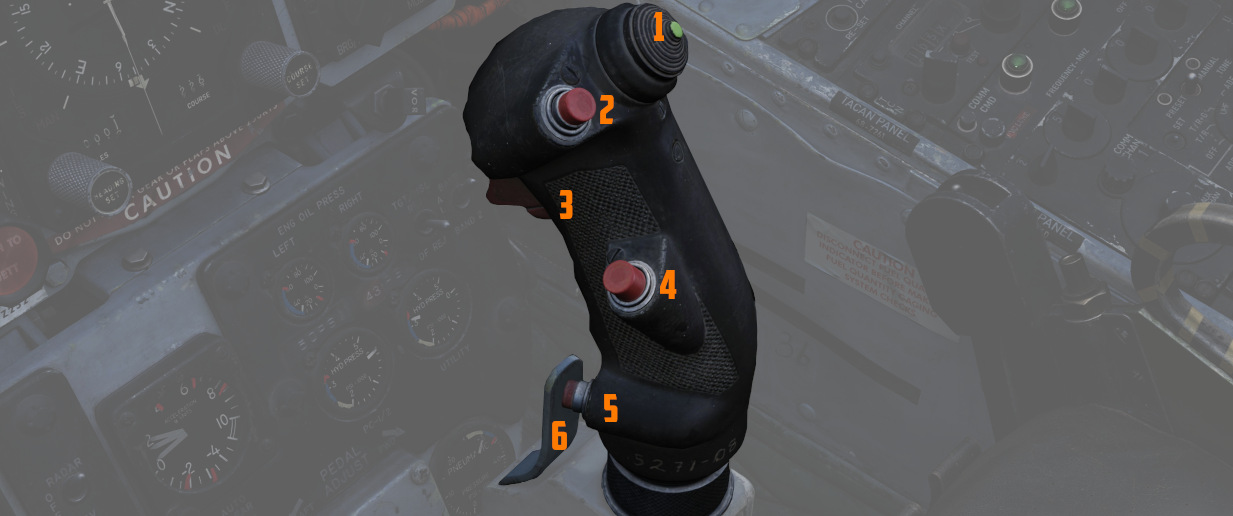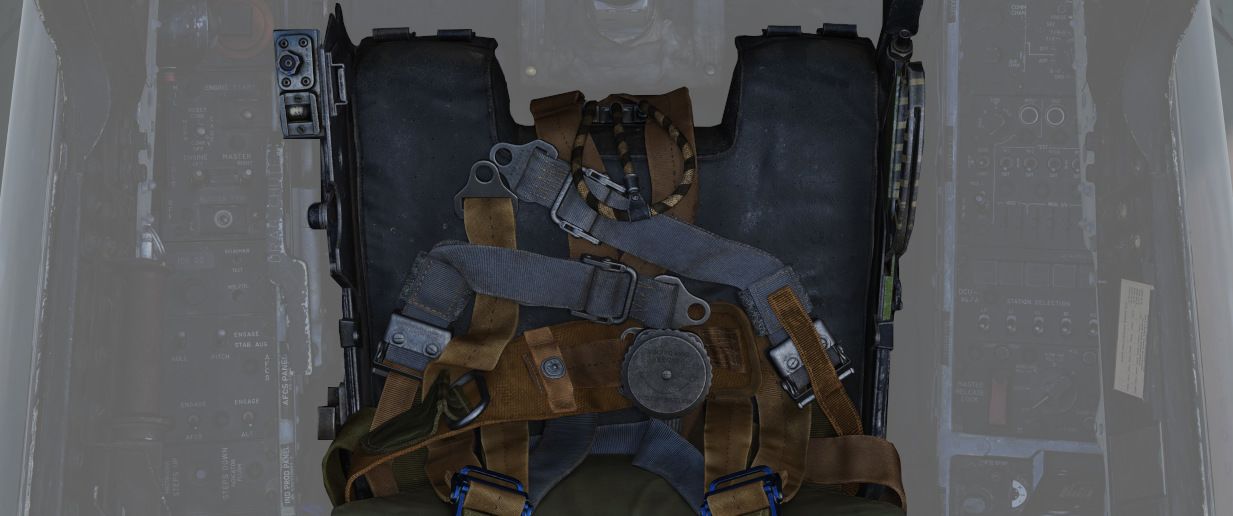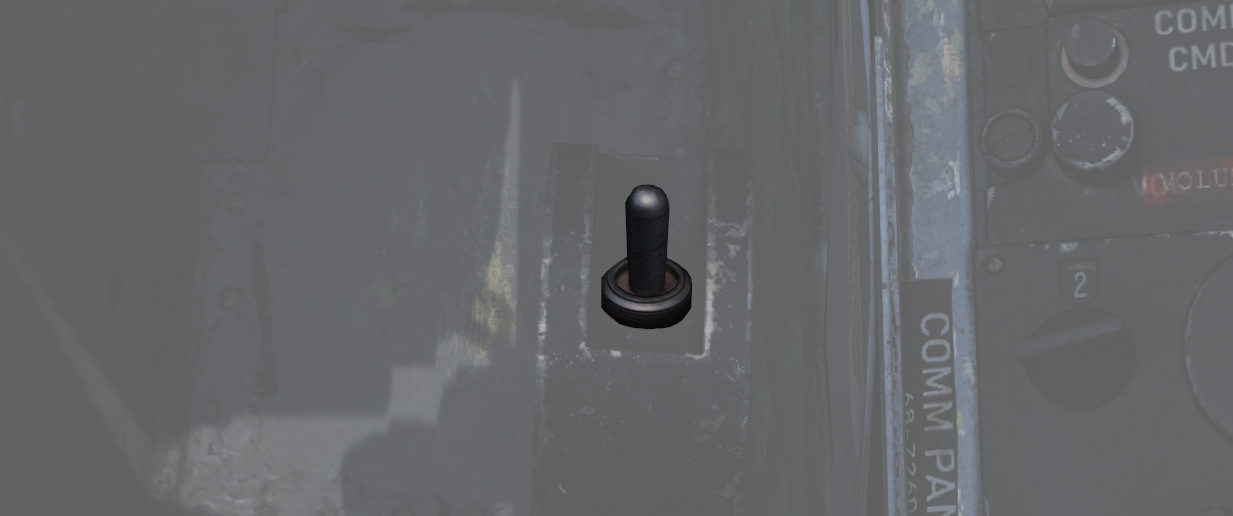Stick and Seat
Stick

A control stick is provided in both cockpits, with near-uniform switchology between the two.
The stick can be hidden by clicking on its base.
Trim Hat
A Trim Control (
Trigger and Bomb Button
Weapons are deliverable through both a trigger switch (
The first stage of the trigger activates the gun camera for recording forward footage.
Air Refueling Release Button
Unique to the front cockpit control stick is the Air Refueling Release (ARR)
Button (
See 3.2.2. Fuel System, 4.2.2. AIM-9 Sidewinder and 4.3.1.2. AGM-65 Maverick for details.
Nose Wheel Steering Button
Both sticks carry a Nose Wheel Steering (NWS or also NGS) button (
Holding the button down permits the crew member to steer the aircraft using the rudder pedals. See 3.1.3 Gear & Ground handling, Nose Gear Steering section for details.
Emergency Quick Release Lever
An Emergency Quick Release lever (
See 3.1.3 Gear & Ground handling, Anti-Skid section for details.
Seat

The seat allows the crew to eject out of the plane by pulling either the cord between the legs or above the head.
See the 3.13 Emergency system section for details on the seat and ejection mechanism.
Drag Chute Handle
Additionally, it features a handle on the left side to control the drag chute.
The chute is applied to reduce landing rollout, or as an aid in spin recovery. The drag chute handle is pulled back to deploy the chute, and, once deployed, a button on the handle is pressed while pulling the handle back further to jettison the chute.
Once jettisoned, the handle is released back into its normal position.
See 3.1.3 Gear & Ground handling, Drag Chute System section for details.
Seat Position

The vertical position of the seat can be changed in either direction for about 5cm using this spring-loaded switch on the right side of the seat.
For landing, it is advisable to put the seat in the most upward position for better visibility.
The operation of the motor must be limited to 30 seconds within 10 minutes to prevent it from overheating and breaking.